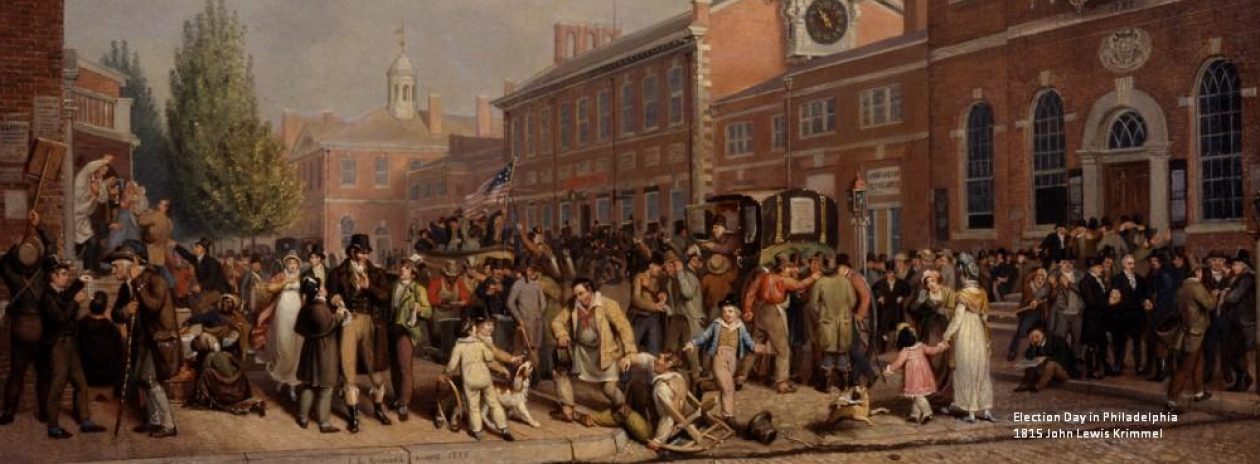Build a Bigger House – Build a Stronger Democracy
Build a Bigger House is about strengthening the voice of the American people in the functioning of our government, and having the people’s voice take the role it was intended to have as outlined in the Constitution.
In the years leading up to 2020, Americans will have an opportunity to repair Congress. The decennial census in 2020 will be a chance not just to “reapportion” representation, but to expand representation to a level consistent with a democracy and necessary for the function of our Constitutional system of government.
How it Got This Way
When Congress met for the first time in 1789, the House of Representatives had 65 members – one for every 60,000 inhabitants.
The House continued to grow until 1911 when it voted to not increase its size as it previously always had after a census, and limited its membership to 435. An average district then had about 210,000 inhabitants.
The Permanent Apportionment Act of 1929 confirmed the fixed size of the House at 435 and established a mathematical formula for reapportionment after future decennial censuses.
The American population has grown far more than perhaps could be imagined in 1910, and as it has grown, it has become the worst-represented citizenry of the world’s democracies. The average U.S. House district now has about 700,000 people. Citizens of other countries are better represented in their governments: in Britain and Italy districts average 97,000; Canada and France, 114,000; Germany, 135,000; Australia, 147,000; and Japan, 265,000.
Effects – Campaign Finance, Term Limits, and more.
It is an economic law that if supply goes down and demand does not, prices increase. The supply of Representatives has remained the same for over a hundred years. Not surprisingly, the costs of getting into Congress have gone up tremendously. The large, populous districts we now have require deep pocket donors to fund big budget, mass-market style campaign strategies. Campaigns in smaller districts would be competitive with smaller budgets and could turn more to local networking and local funding. Average citizens could once again afford to run for national office, increasing competition and diversity, a much more democratic way of limiting terms in office than government set mandates on who may and who may not run for office.
More districts would mean greater equality in representation and move us back closer to the principal of one citizen, one vote. Currently for example, the single Wyoming member currently represents about 560,000 people, while her lone counterpart in Delaware represents 900,000. The current system of apportionment gives some citizens in some states much more voting power than other citizens in other states. Simply put, that is not democracy.
A House that more truly serves as the voice of the people would strengthen its separate authority it was meant to have under the Constitution.
Proposed Corrective Measures:
- Recent efforts to resize the House through judicial action have failed. In 10-291 – CLEMONS, JOHN T., ET AL. V. DEPT. OF COMMERCE, the U.S. District Court for the Northern District of Mississippi in December 2010 dismissed the case for lack of jurisdiction, and the Supreme Court declined to hear an appeal. Action for reform resides with the Congress.
- Ann Lousin, a professor at the John Marshall Law School in Illinois favors the so-called Wyoming rule, which would require no congressional district have more people than the smallest state. With 563,626 residents of Wyoming in 2010, that would put the House at around 548 members.
- Brian Frederick, a political science professor at Bridgewater State University in Massachusetts prefers the cube root rule of thumb, based on an observation by retired University of California at Irvine professor Rein Taagepera that most lower chambers are the cube root of the country’s population. That would put the House at around 675 members.
- University of Virginia political analyst Larry Sabato has called for more than halving the size of the average congressional district to about 300,000 constituents. That would put the House at more than 1,000 members.
- Gail Johnson, retired New Jersey software executive, goes the furthest, calling for congressional districts to have no more than 100,000 constituents. That would put the House at around 3,100 members, though she argues we could dramatically cut the number of congressional staffers at the same time.
While enlarging the House seems counter intuitive as a correction to the dysfunction of Congress, allowing the concentration of ever greater power in ever fewer hands is not a recipe for a vibrant democracy. The problems are only going to grow worse. Continued growth of the U.S. population will push the average district size to over 800,000 by 2030. If you don’t like the way Congress functions now, just wait and see what it is like by 2030.
In presiding over the Constitutional Convention in 1787, George Washington voiced an opinion on only a single topic: adequate level of representation. At his urging and just as the members were signing off on the Consitiution, the committee adopted a proposal to change the minimum district size from 40 thousand people to 30 thousand.
In the upcoming elections, seek out and vote for candidates who will stand with President Washington to make the House of Representatives the “People’s House” once again.
